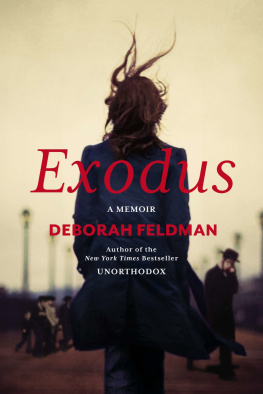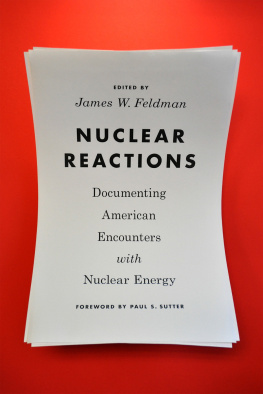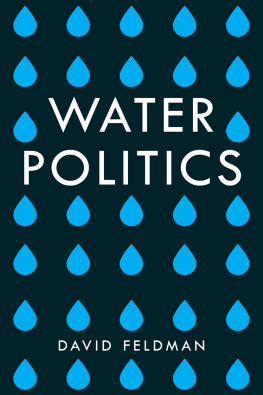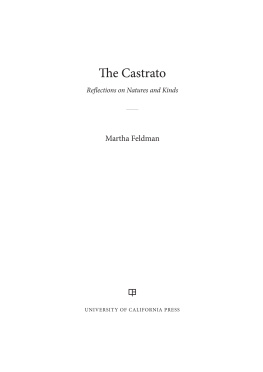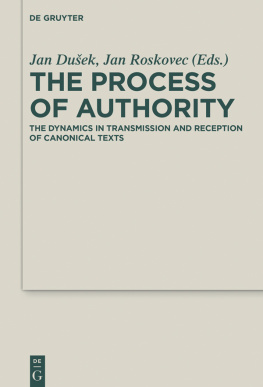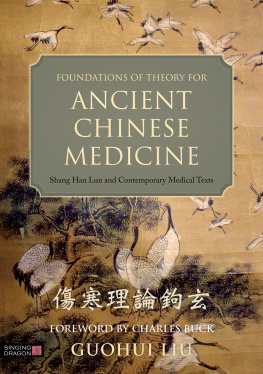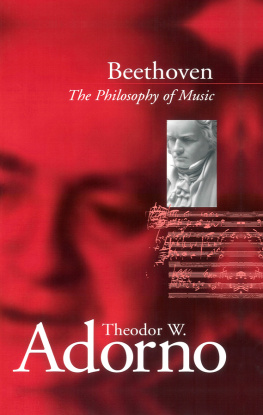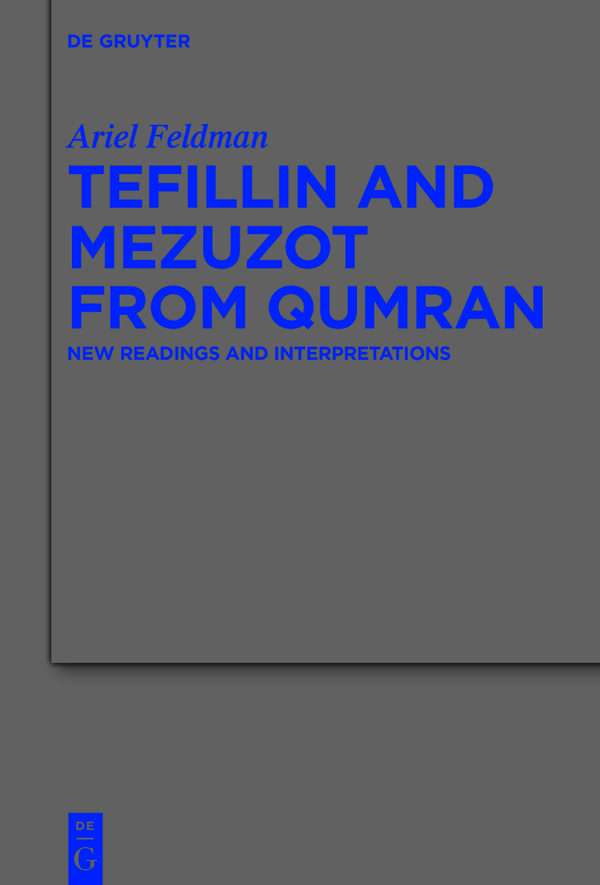Beihefte zur Zeitschrift fr die alttestamentliche Wissenschaft
Edited by
John Barton
Reinhard G. Kratz
Nathan MacDonald
Sara Milstein
Markus Witte
Volume
ISBN 9783110725261
e-ISBN (PDF) 9783110725377
e-ISBN (EPUB) 9783110725438
Bibliographic information published by the Deutsche Nationalbibliothek
The Deutsche Nationalbibliothek lists this publication in the Deutsche Nationalbibliografie; detailed bibliographic data are available on the Internet at http://dnb.dnb.de.
2022 Walter de Gruyter GmbH, Berlin/Boston
Abbreviations
BZAW
Beihefte zur Zeitschrift fr die alttestamentliche Wissenschaft
CBET
Contributions to Biblical Exegesis and Theology
DJD
Discoveries in the Judaean Desert
DSDDead Sea Discoveries
FAT
Forschungen zum Alten Testament
FRLANT
Forschungen zur Religion und Literatur des Alten und Neuen Testaments
IEJIsrael Exploration Journal
HTRHarvard Theological Review
HUCAHebrew Union College Annual
JAJJournal of Ancient Judaism
JBLJournal of Biblical Literature
JJSJournal of Jewish Studies
JSPJournal for the Study of the Pseudepigrapha
JSQ
Jewish Studies Quarterly
RevQRevue de Qumrn
STDJ
Studies on the Texts of the Desert of Judah
SVT
Supplements to Vetus Testamentum
TSAJ
Texte und Studien zum antiken Judentum
VTVetus Testamentum
Frequently Cited Sources
DJD 1
Dominique Barthlemy and Jzef T. Milik, Qumran Cave 1. DJD 1. Oxford: Clarendon Press, 1955.
DJD 2
Pierre Benoit et al., Les grottes de Murabbaat. DJD 2, 2a. Oxford: Clarendon Press, 1961.
DJD 3
Maurice Baillet et al., Les petites grottes de Qumrn. DJD 3, 3a. Oxford: Clarendon Press, 1962.
DJD 6
Roland de Vaux and Jzef T. Milik, Qumrn grotte 4.II: I. Archologie, II. Tefillin, Mezuzot et Targums (4Q1284Q157). DJD 6. Oxford: Clarendon Press, 1977.
DJD 9
Patrick Skehan, Eugene Ulrich, and Judith E. Sanderson, Qumran Cave 4.IV: Palaeo-Hebrew and Greek Biblical Manuscripts. DJD 9. Oxford: Clarendon Press, 1992.
DJD 12
Eugene Ulrich et al., Qumran Cave 4.VII: Genesis to Numbers. DJD 12. Oxford: Clarendon Press, 1994.
DJD 14
Eugene Ulrich et al., Qumran Cave 4.IX: Deuteronomy, Joshua, Judges, Kings. DJD 14. Oxford: Clarendon Press, 1995.
DJD 23
Florentino Garca Martnez et al., Qumran Cave 11.II: 11Q218, 11Q2031. DJD 23. Oxford: Clarendon Press, 1998.
DJD 38
James H. Charlesworth et al., Miscellaneous Texts from the Judaean Desert. DJD 38. Oxford: Clarendon Press, 2000.
Introduction. Tefillin and Mezuzot from Qumran: An Unfinished Business
Tefillin and mezuzah, the two iconic Jewish ritual objects, require little introduction. Affixed to a doorpost, a small capsule of mezuzah holds inside two passages from the book of Deuteronomy, Deut 6:49 and 11:1321. These are customarily donned during a morning prayer: one box is attached to the forehead and the other to the arm.
These familiar practices are traditionally derived from the biblical verses placed inside mezuzah and tefillin: Exod 13:9, 16 and Deut 6:89; 11:18. Thus, for instance, Deut 6:89 commands: Bind them as a sign on your hand and let them serve as a symbol on your forehead; inscribe them on the doorposts of your house and on your gates.
Searching for the early evidence for the tefillin and mezuzah practices, scholars often point to the Letter of Aristeas, a Jewish work written in Greek during the second half of the second century BCE. According to some, it refers to both tefillin and mezuzah (158159).
Precious as they are, these possible early references to mezuzah and tefillin reveal almost nothing about the objects themselves. As with many other aspects of Second Temple Judaism, it was the discovery of the Dead Sea Scrolls that rescued ancient tefillin and mezuzot from an obscurity. The findings from the Judean Desert brought to light multiple texts that have been identified as mezuzot and tefillin. Most of them come from the Caves of Qumran. Several others were found in the caves associated with the First and Second Jewish revolts against Rome. A recent study aptly describes them as the Galapagos Islands of the tefillin practice.
Since their discovery and publication, scholarly work on tefillin and mezuzot from the Judean Desert proceeded in two directions. First, since both tefillin and mezuzot contain scriptural texts, much attention was given to comparing their readings to other textual witnesses of Exodus and Deuteronomy.
Owing a great deal to the earlier scholarship, the present volume does not claim to be a comprehensive treatment of tefillin and mezuzot from the Judean Desert. Rather, it hopes to contribute to their ongoing study by revisiting the extant editions of tefillin and mezuzot in the search for fragments that have not been adequately addressed. Such a quest may appear to be somewhat surprising, as the vast majority of tefillin and mezuzot was already published by the end of the 1970s and thus have long been available to the scholarly community. And yet, in several respects mezuzot and tefillin from the Judean Desert remain an unfinished business. Thus, multiple tefillin from Qumran remain unopened. These include the nine tefillin recently re-discovered in the depths of a storage. A close scrutiny of their editions indicates a presence of texts that have not been fully assessed. These fall into three categories. First, there are multiple tefillin and mezuzot that contain legible fragments which their editors were unable to identify. Second, several tefillin and mezuzot feature imprints of letters that have not been deciphered. Third, there are texts which were classified as tefillin and mezuzot yet left unread.
It was the last category that drew my attention to tefillin and mezuzot in the first place. In a series of articles co-authored with Faina Feldman we have tried to decipher three texts which Jzef T. Milik identified as tefillin and mezuzot but decided not to transcribe (4QPhyl T [4Q147]; 4QPhyl U [4Q148]; Mur5). My other findings are incorporated in this monograph.
I must state from the outset that this book is not an attempt to read every partially deciphered or unidentified fragment of the published tefillin and mezuzot. Thus, this book does not claim to finish the unfinished business of tefillin and mezuzot from the Judean Desert. Nor does it pretend to be the last word on the reading of the fragments it revisits. New imaging techniques and further scrutiny of the texts will surely improve the work presented here. Nevertheless, I hope that the new readings and interpretations proposed in this volume offer a modest contribution to our understanding of both specific artifacts and the corpus in general.
To accomplish the task at hand, this study proceeds as follows. To set the stage, Chapter 1 offers a birds-eye overview of tefillin and mezuzot from the Judean Desert, including their contents, physical and scribal features, and methods of classification. Since the majority of the new readings proposed in this book are from Exodus and Deuteronomy, to properly place these within their wider textual context, Chapter 2 briefly surveys manuscripts of Exodus and Deuteronomy from the Judean Desert. The next several chapters, Chapters 38, take a close look at six texts: 1QPhyl, 4QPhyl L, 4QPhyl T, 4QPhyl U, 4QMez C, and 8QPhyl. For two of these, 1QPhyl and 4QMez C, this is the first attempt at revisiting their unidentified or undeciphered fragments since their initial publication (Chapters 3, 7). In the case of 4QPhyl L, Chapter 4 offers the first transcription of the imprints of letters deposited by a segment of text that is no longer extant on the parchment. For 4QPhyl T and 4QPhyl U, two texts that Faina Feldman and I studied in detail elsewhere, Chapters 56 propose new physical reconstruction (4QPhyl T) and reading (4QPhyl U). The concluding remarks bring the threads together and outline several areas in which the texts addressed in this monograph contribute to the study of ancient tefillin and mezuzot.


